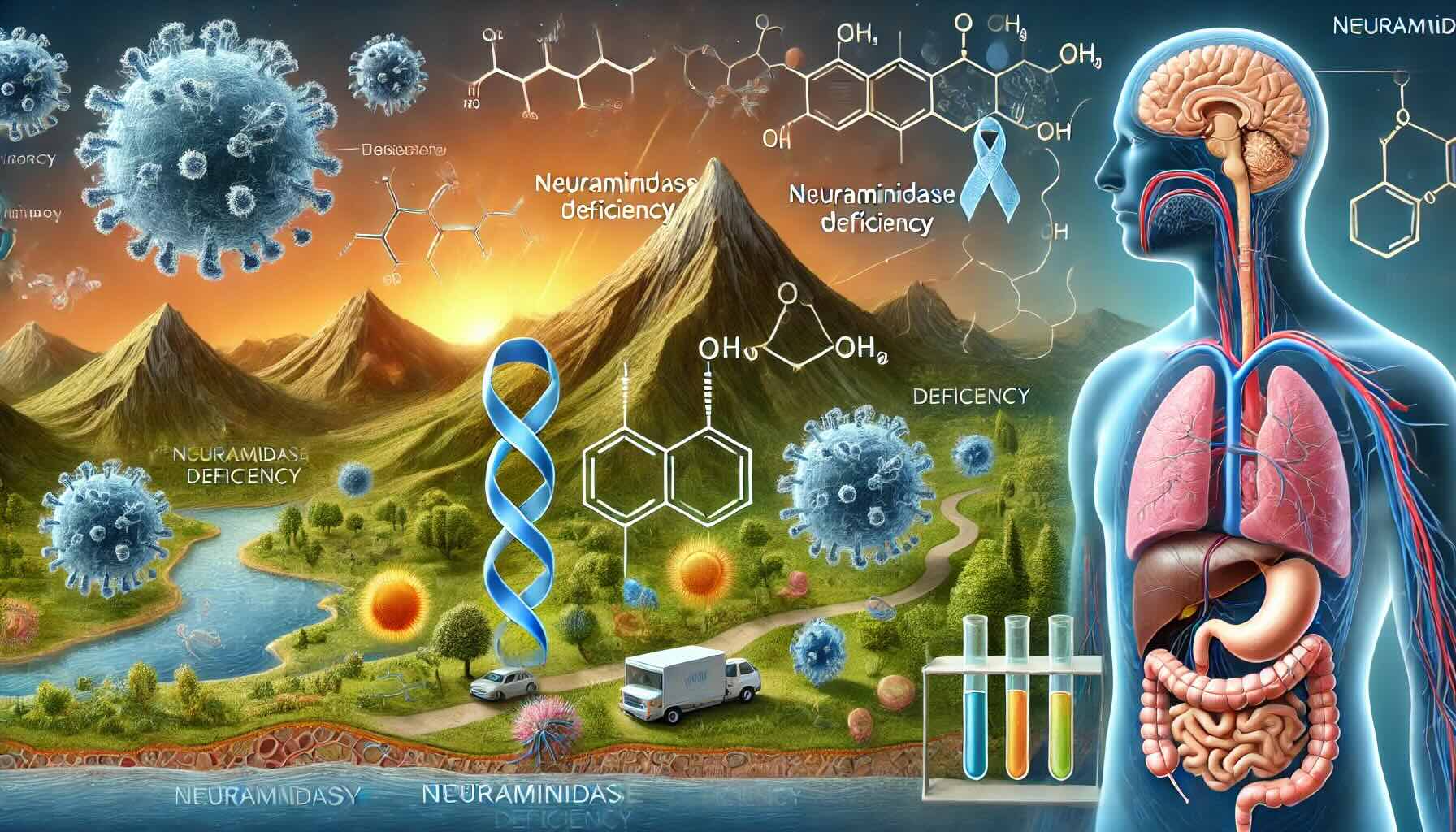
Neuraminidase deficiency is a rare genetic disorder that affects the body's ability to break down certain molecules. This condition can lead to a variety of symptoms, including developmental delays, muscle weakness, and respiratory issues. Neuraminidase is an enzyme crucial for the proper function of many bodily processes. When this enzyme is deficient, it can cause a buildup of harmful substances in cells, leading to severe health problems. Understanding the basics of this condition can help in recognizing symptoms early and seeking appropriate medical care. Here are 25 essential facts about neuraminidase deficiency that will provide a clearer picture of this complex disorder.
Key Takeaways:
- Neuraminidase deficiency, or sialidosis, is a rare genetic disorder that affects the body's ability to break down sugar molecules. It can cause muscle weakness, vision problems, and seizures.
- There is currently no cure for neuraminidase deficiency, but treatment focuses on managing symptoms and improving quality of life. This may include medications, therapy, and regular medical monitoring.
What is Neuraminidase Deficiency?
Neuraminidase deficiency, also known as sialidosis, is a rare genetic disorder. It affects the body's ability to break down certain complex molecules. This condition can lead to a variety of health issues.
- Neuraminidase deficiency is caused by mutations in the NEU1 gene.
- The NEU1 gene provides instructions for making an enzyme called neuraminidase.
- Neuraminidase is crucial for breaking down sialic acids, which are complex sugar molecules.
- Without enough neuraminidase, sialic acids accumulate in cells, leading to damage.
- Sialidosis is inherited in an autosomal recessive pattern, meaning both parents must carry the mutated gene.
Types of Neuraminidase Deficiency
There are two main types of neuraminidase deficiency: Type I and Type II. Each type has distinct characteristics and symptoms.
- Type I sialidosis, also known as cherry-red spot myoclonus syndrome, usually appears in late childhood or adulthood.
- Type II sialidosis, also known as infantile sialidosis, presents in infancy or early childhood.
- Type I is generally less severe than Type II.
- Type II can lead to severe developmental delays and physical abnormalities.
- Both types can cause vision problems due to the accumulation of sialic acids in the eyes.
Symptoms of Neuraminidase Deficiency
The symptoms of neuraminidase deficiency can vary widely depending on the type and severity of the condition.
- Common symptoms include muscle weakness, ataxia (lack of muscle coordination), and myoclonus (involuntary muscle jerks).
- Patients may experience seizures, which can be difficult to control.
- Vision problems, such as cherry-red spots in the eyes, are a hallmark of the condition.
- Hearing loss is also common in individuals with neuraminidase deficiency.
- Some patients may develop coarse facial features and skeletal abnormalities.
Diagnosis of Neuraminidase Deficiency
Diagnosing neuraminidase deficiency involves a combination of clinical evaluation, laboratory tests, and genetic testing.
- Doctors often start with a physical examination and review of the patient's medical history.
- Blood tests can reveal elevated levels of sialic acids.
- Urine tests may show abnormal excretion of sialic acids.
- Genetic testing can confirm mutations in the NEU1 gene.
- Eye exams can detect cherry-red spots, which are indicative of the condition.
Treatment and Management
Currently, there is no cure for neuraminidase deficiency. Treatment focuses on managing symptoms and improving quality of life.
- Anticonvulsant medications can help control seizures.
- Physical therapy may improve muscle strength and coordination.
- Occupational therapy can assist with daily living activities.
- Regular eye and hearing exams are important for monitoring and managing vision and hearing loss.
- Genetic counseling is recommended for affected families to understand the risks and implications of the disorder.
Final Thoughts on Neuraminidase Deficiency
Neuraminidase deficiency, a rare genetic disorder, affects the body's ability to break down sialic acids. This can lead to severe symptoms like developmental delays, muscle weakness, and organ enlargement. Early diagnosis is crucial for managing the condition and improving quality of life. Genetic testing and enzyme assays are key tools for identifying the disorder. While there's no cure yet, treatments focus on symptom management and supportive care. Research is ongoing, offering hope for future therapies. Understanding this condition helps raise awareness and support for affected individuals and their families. Stay informed, consult healthcare professionals, and consider genetic counseling if there's a family history of the disorder. Knowledge empowers us to make better health decisions and advocate for those in need.
Frequently Asked Questions
Was this page helpful?
Our commitment to delivering trustworthy and engaging content is at the heart of what we do. Each fact on our site is contributed by real users like you, bringing a wealth of diverse insights and information. To ensure the highest standards of accuracy and reliability, our dedicated editors meticulously review each submission. This process guarantees that the facts we share are not only fascinating but also credible. Trust in our commitment to quality and authenticity as you explore and learn with us.
